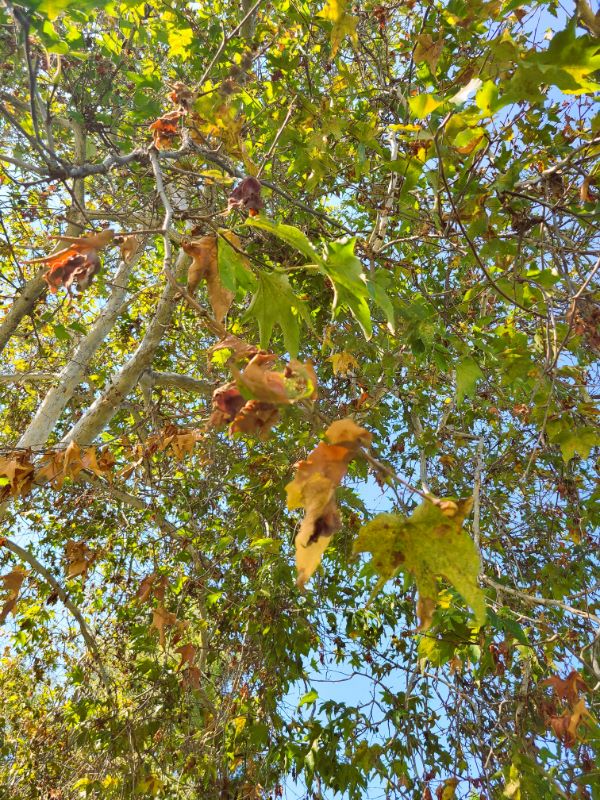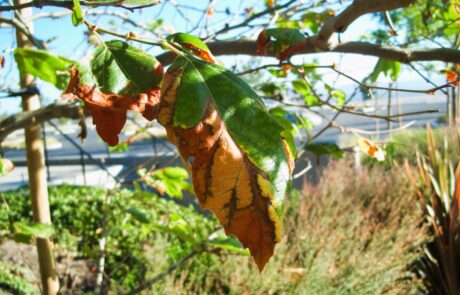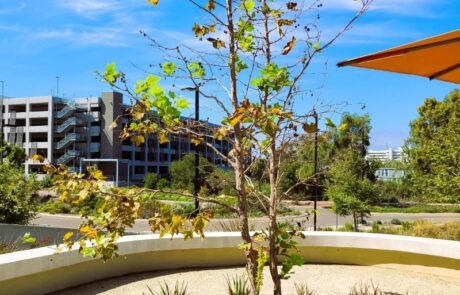What is Sycamore Anthracnose?
Sycamore anthracnose (Apiognomonia veneta) is a fungus that affects and kills sycamore shoots and leaves. Anthracnose affects the developing shoots, expanding leaves and appears along the leaf veins of the sycamore. Anthracnose fungi can kill portions of the leaves or entire leaves and twigs scattered throughout the canopy of the tree. The lesions commonly develop first around the major leaf veins as discoloration, and lead to major damage of the shoot terminals and can lead to entire leaves being killed by this fungus.
Damaged leaves affected by anthracnose can appear curled or distorted as shown in the images below. This will lead to premature leaf drop during the trees growing season. The sycamores susceptibility to infection from this fungi can cause it to lose apical control resulting in disfiguration such as decreased height and lateral growth. This often appears as a twisted disfiguration of the tree. The extensive damage to new growth may stress or weaken the Sycamore tree then making it susceptible to secondary pests and diseases.
Sycamore anthracnose fungus spores are produced when infected tissue has been wet and will often spread by the wind or rain from infected to healthy trees. Spore production and infection will continue as long as new growth and wet conditions occur. Signs of damage can be necrotic patches along the veins of leaves, defoliation, and sunken cankers on tree trunk or branches.
Treatment Plans
Ideal time for treatment is BEFORE the disease is visible and active. Treatments can be done in either early Spring as new leaves begin to develop or just before trees go into dormant stage in late Summer or early Fall.
Damage can be most severe when prolonged Spring rains occur or after new plant growth develops. Monitor your trees closely during these times. Please feel free to reach out with any questions regarding your Sycamore trees. To contact our team of experts please visit the link below

Signs of Damage
Anthracnose fungi attacks primarily occur on the leaves of the tree. If leaves are infected when young they can become distorted and curled, thus killing portions of the leaves. The damage caused by anthracnose disease can lead to defoliation of the tree, often shown from the ground up leaving a rim of undamaged foliage near the top of the Sycamore tree.
Sycamore anthracnose typically develops along major leaf veins, there will be dark and sunken areas formed along the veins and eventually expand to the entire leaf. The tree may also develop cankers on twigs or older branches resulting in dieback and potential death of larger branches and the trees overall new shoot growth.






